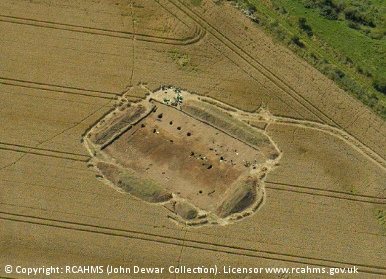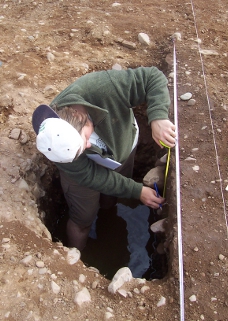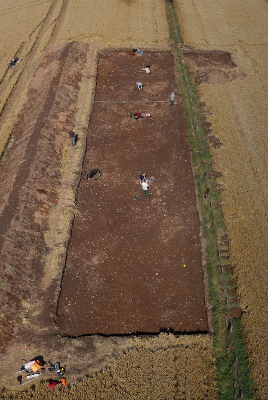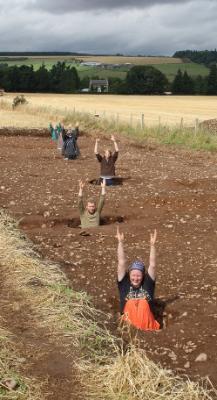Palisaded Enclosure
 More than 200 timbers defined the large palisaded enclosure at Forteviot, which dates to the Later Neolithic (around 2800BC). Roughly circular in shape this monument encloses an area over 250m in diameter with a narrow entrance avenue on the north side. Comparisons can be drawn to other excavated examples in southern Scotland, but still very little is known about these enigmatic monuments. A portion of the avenue and two areas along the perimeter of the enclosure have been excavated by SERF.
More than 200 timbers defined the large palisaded enclosure at Forteviot, which dates to the Later Neolithic (around 2800BC). Roughly circular in shape this monument encloses an area over 250m in diameter with a narrow entrance avenue on the north side. Comparisons can be drawn to other excavated examples in southern Scotland, but still very little is known about these enigmatic monuments. A portion of the avenue and two areas along the perimeter of the enclosure have been excavated by SERF.
In the Late Neolithic is it likely that Forteviot was largely wooded. Traces of ancient tree pits were found during excavation of the palisaded enclosure. At least two of these pits had been cut by avenue postholes and the remains of charcoal suggest that the trees may have been purposefully cleared before the construction of the monument.

Within the enclosure, great numbers of people could have gathered to participate in ceremonies. The avenue would have guided movement and influenced the experience of the enclosure. Less than 4m wide, the avenue would have provided a confined passage from which the vast visual expanse of the enclosure itself would have opened out. At the junction between the avenue and the enclosure was a large clay-lined pool, which, if contemporary with the enclosure, would have further defined the experience of going in and out of the enclosure.
As time passed the monument seems to have been transformed: in some cases, posts were removed, while others were burnt where they stood and still others left to rot. The location of the monumental timber enclosure appears to have remained visible long after the posts disappeared, perhaps marked by hollows where posts had stood or by an accompanying earthwork.


Report Links
- 2007 FN07 DSR
- 2010 FN10.05b DSR
- 2010 FN10.07 DSR
- Radiocarbon Dating
- Geophysical Survey

